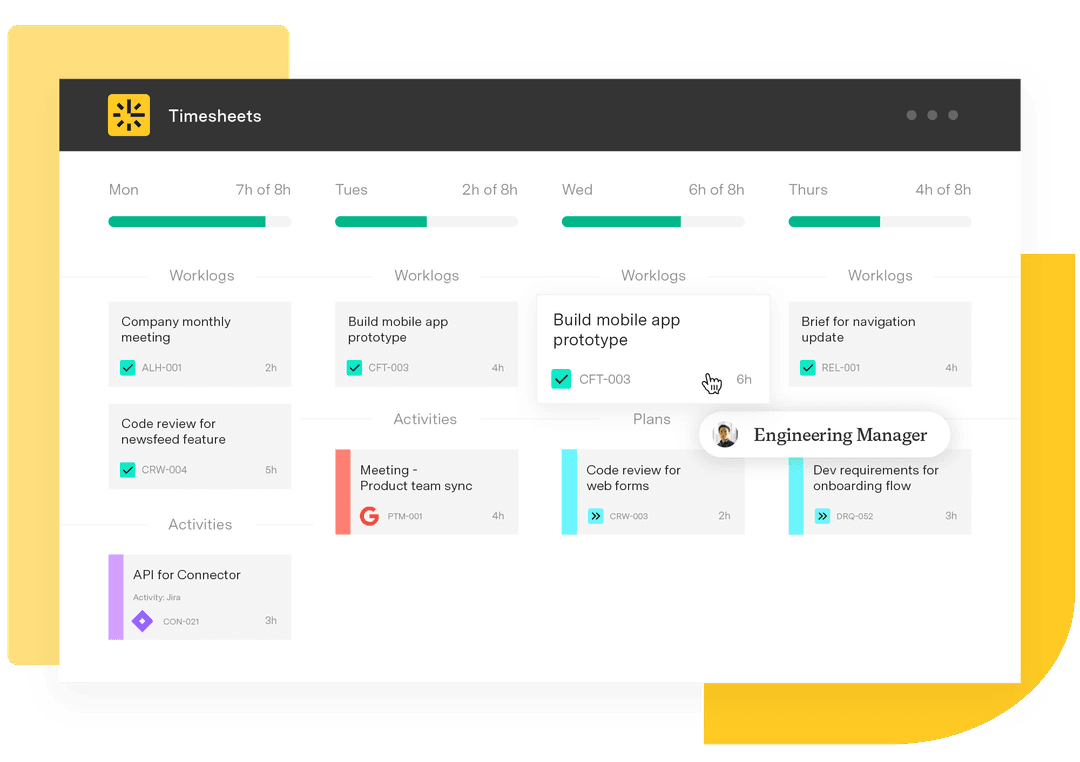Expectancy theory of motivation: How effort drives performance
Tempo Team
Ever wonder why some employees give their best while others do just enough to get by? It’s not always about their skill level or job satisfaction. Sometimes, it’s about motivation. More specifically, whether they believe their effort leads to meaningful rewards.
People push themselves when they trust that their hard work will pay off. But if they don’t see a clear link between effort and reward, their motivation fades. This idea is core to the expectancy theory of motivation, a framework that explains how expectations shape people’s drive to succeed.
Let’s explore how this theory works and how its application keeps teams engaged and performing at their best.
What is the expectancy theory of motivation?
Developed by Yale business professor Victor Vroom, the expectancy theory of motivation explains that people decide how much effort to put into a task based on what they believe happens next. If they expect their hard work to lead to recognition, rewards, or promotions, they’re more likely to stay motivated. If they don’t, their effort drops.
The expectancy theory’s definition comes from organizational psychology and highlights the relationship between effort, performance, and outcomes. Consider this expectancy theory example: If a sales employee believes closing more deals leads to a bonus, they’ll likely push harder. But if they feel the bonus is out of reach or unfairly decided, their motivation will take a hit.
Leaders and managers can apply expectancy theory by creating a work environment where employees believe their efforts matter. That starts with clear expectations, a transparent reward system, and trust between leadership and employees. When people see a direct link between their actions and achievements, they stay engaged and contribute to overall team success.
Elements of the expectancy theory of motivation
The expectancy theory of motivation focuses on three elements: expectancy, instrumentality, and valence. When employees believe they can succeed (expectancy), trust that strong performance leads to rewards (instrumentality), and value the rewards offered (valence), they’re more likely to stay motivated and perform at peak productivity.
1. Expectancy: “If I try, can I succeed?”
Expectancy is the belief that effort leads to successful performance. When employees feel confident in their abilities and possess the necessary tools and support, they’re more likely to put in the effort.
Example: If someone is assigned a complex project without training, clear instructions, or adequate time, they may not believe they can succeed – no matter how hard they try. This is a case of low expectancy. The employee doesn’t think their effort will result in good performance, so they lack motivation to try.
2. Instrumentality: “Will my effort be rewarded?”
Instrumentality is the belief that strong performance leads to meaningful rewards. If employees trust that their hard work pays off – whether through promotions, bonuses, recognition, or career growth – they’re more likely to stay motivated.
Example: Two employees perform at different levels, but both receive the same recognition and pay. Over time, the high performer may wonder, “Why work harder?” and begin putting in less effort.
3. Valence: “Do I want this reward?”
Valence refers to how much an employee values the reward offered. Some people are driven by higher salaries or promotions, whereas others are motivated by career development or public recognition. If the reward doesn’t align with their priorities, motivation drops.
Example: An employee who values financial rewards may feel unmotivated if their efforts garner verbal recognition without any monetary bonus. In this case, the reward doesn’t align with what they find meaningful.
Applying expectancy theory in today’s workplace
To keep their team motivated, leaders must create an environment where employees clearly see the connection between effort, performance, and rewards. When that connection is strong, engagement and job satisfaction follow.
Here’s how to put the employee motivation expectancy theory into practice:
1. Set clear, achievable goals
Employees can’t stay motivated if they’re unsure of expectations or if goals feel out of reach. Unclear or unrealistic goals lead to lower expectancy and motivation.
How to improve expectancy:
Define specific, measurable, and realistic goals.
Divide large objectives into smaller, achievable tasks.
Provide resources and training so employees feel equipped to succeed.
2. Provide consistent feedback and coaching
Without regular feedback, employees can’t tell if their efforts lead to success. This reduces their expectancy and engagement.
How to improve expectancy:
Give regular, constructive feedback that reinforces good performance and builds confidence.
Offer coaching and mentorship to support skill development.
Use tools like performance dashboards to help employees track their progress and encourage self-assessment.
3. Design a transparent reward system
Employees must trust that good performance leads to fair, consistent rewards. If they believe promotions, bonuses, or recognition are based on favoritism instead of merit, instrumentality suffers, and motivation lowers.
How to improve instrumentality:
Outline performance expectations and be transparent about how employees earn rewards.
Consistently recognize and reward performance to build trust in the process.
Ensure fairness in promotions, bonuses, and recognition.
Use data and performance-tracking tools to guide objective reward decisions.
3. Make rewards personalized and meaningful
Motivation decreases when rewards don’t align with what employees care about. Since valence is subjective, a one-size-fits-all reward system won’t work.
How to improve valence:
Talk to employees to understand what motivates them.
Offer a mix of monetary and nonmonetary incentives.
Provide flexible, customizable benefits, such as learning stipends, additional time off, or project ownership.
4. Foster trust and open communication
Even the best systems fail if employees don’t trust leaders to follow through. Broken promises or inconsistent rewards undermine motivation and weaken all three elements of expectancy theory. A great boss builds and maintains trust within their team.
How to improve expectancy, instrumentality, and valence:
Keep your commitments and follow through on promised rewards.
Be transparent about company goals, expectations, and decision-making.
Build a culture of recognition where employees feel valued and appreciated.
Limitations of the expectancy theory of motivation
Although the expectancy theory of motivation offers a valuable framework for understanding what drives people at work, it has limitations.
Overemphasis on rational thinking
Expectancy theory assumes people make decisions based on logic and reason – that they always put in effort if they believe it leads to rewards. But motivation isn’t so straightforward. People's emotions, personal values, and work environment also influence their behavior, and the theory doesn’t always account for these factors. Although logic plays a role, it’s not the only aspect that drives behavior.
Challenging to apply across diverse teams
Team members differ in what they value and how they perceive support, fairness, and success. In particular, expectancy and valence are highly subjective and vary from person to person. One employee might feel confident that hard work leads to success, while another doubts their efforts make a difference – especially if they lack support or resources. Similarly, one employee might be driven by the chance for a promotion, whereas another prefers more flexibility or recognition.
Cultural backgrounds, work styles, and personal experiences all influence these perceptions. To sustain motivation, managers must adapt their approach to both individuals and group dynamics, which can be challenging.
Less effective for specific roles or work cultures
Expectancy theory relies on external rewards like bonuses, promotions, or recognition. But in some roles – particularly creative, mission-driven, or autonomous ones – motivation is more intrinsic, based on personal satisfaction or passion for the work. In these environments, the theory’s focus on extrinsic motivators may not apply as well.
Doesn’t fully reflect modern workplace values
Developed decades ago, expectancy theory emphasizes traditional rewards like money and career advancement. However, today’s employees, especially younger generations, often prioritize things like job satisfaction, work-life balance, and purpose. This shift in values means the theory might not fully capture what motivates people in today’s evolving workplace.
Supporting motivation and team alignment with Tempo
Tempo’s suite of project management tools gives leaders practical ways to apply the expectancy theory of motivation in the workplace:
Timesheets helps team members understand how they spend their time and how their work contributes to broader goals.
Capacity Planner helps managers assign realistic workloads, building confidence that success is within reach.
Custom Charts for Jira allows leaders and employees to track progress in real time through dashboards, helping them recognize achievements and tie performance to meaningful rewards.
Tempo helps leaders align individual efforts with team objectives. Everyone knows what’s expected, understands the value of their contributions, and stays motivated to perform at their best.
Ready to boost motivation and improve performance? Book a demo today.














































